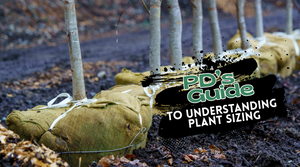Sweet Azalea
Sweet Azalea (Rhododendron arborescens)
Sweet Azalea (Rhododendron arborescens) is a native deciduous azalea known for its highly fragrant white to pink-tinged flowers, late spring bloom time, and graceful upright form. Found naturally along streams and wooded slopes in the Appalachian Mountains, this species brings elegance and strong pollinator value to gardens and naturalized areas. Its name refers to the sweet, spicy fragrance of the flowers, often compared to heliotrope or cloves.
Distinctive Features
This upright, multi-stemmed shrub typically grows 6 to 12 feet tall and 4 to 8 feet wide. In late spring to early summer, clusters of trumpet-shaped white flowers with a reddish tube emerge just as foliage matures. The blooms are intensely fragrant and attract a variety of pollinators. Glossy green, oblong leaves provide a clean summer presence, turning shades of red or orange in fall. Its later bloom time extends the azalea season and complements earlier-blooming native species.
Growing Conditions
- Sun Exposure: Partial shade to full sun; thrives in filtered light under tall trees.
- Soil: Prefers moist, acidic, well-drained soil rich in organic matter.
- Water: Moderate to high; appreciates consistent moisture, especially in sandy or fast-draining soils.
- Humidity: Well-suited to humid climates; protect from drying winds.
- USDA Hardiness Zones: 5 to 8; cold hardy and adaptable to much of the eastern U.S.
Ideal Uses
- Focal Point Shrub: Fragrant flowers and upright form make it ideal as a specimen or accent.
- Woodland Gardens: Blends naturally into shaded borders and understory plantings.
- Native Plant Gardens: A standout among native azaleas, especially when massed or combined with other deciduous species.
- Pollinator Gardens: Draws hummingbirds, butterflies, and native bees with its nectar-rich blooms.
- Streamside or Moist Borders: Performs beautifully near water features or in damp, shady corners.
Low Maintenance Care
Sweet Azalea is relatively easy to grow in the right conditions. Its need for moisture and acidic soil is balanced by its resilience to pests and disease. It forms an airy, upright habit without requiring pruning.
- Watering: Provide regular moisture, particularly in dry periods or sandy soils.
- Pruning: Little pruning needed; shape after bloom if desired or to remove crossing branches.
- Fertilizing: Use an acid-loving plant fertilizer in early spring if growth appears weak.
- Pest and Disease Resistance: Generally free of serious issues; more resistant than many evergreen rhododendrons.
- Winter Care: Fully hardy; mulch in fall to conserve soil moisture and protect roots in colder regions.
Why Choose Sweet Azalea?
Sweet Azalea (Rhododendron arborescens) offers fragrance, native charm, and pollinator support in one refined shrub. Its upright habit, late-season blooms, and graceful presence make it a natural fit for woodland and shade gardens.
- Intensely Fragrant Flowers: Sweet, clove-like scent is unmatched among native azaleas.
- Late Spring Bloom: Extends the flowering season well into early summer.
- Elegant Native Form: Upright shape adds structure and texture to shade gardens.
- Pollinator Favorite: Provides important nectar source after earlier spring bloomers fade.
- Adaptable and Hardy: Withstands cold winters and thrives in moist, acidic soils.
For native beauty that lingers into summer and adds fragrance, pollinator value, and refined structure, Sweet Azalea is a strong addition to naturalistic landscapes.

OUR SIZING
Not sure what 2 inch B&B or 30 Gallon Clump really means? This guide breaks down all our plant size terms so you know exactly what to expect, whether you're ordering online or picking up at our nursery. From caliper measurements to container volumes, we've decoded our system to help you shop with confidence.

Plant Detectives Shipping Guide
Nationwide plant shipping made easy. Learn how we ship trees, shrubs, annuals and perennials. No order too big or too small. Fast, careful, and contractor-friendly.

